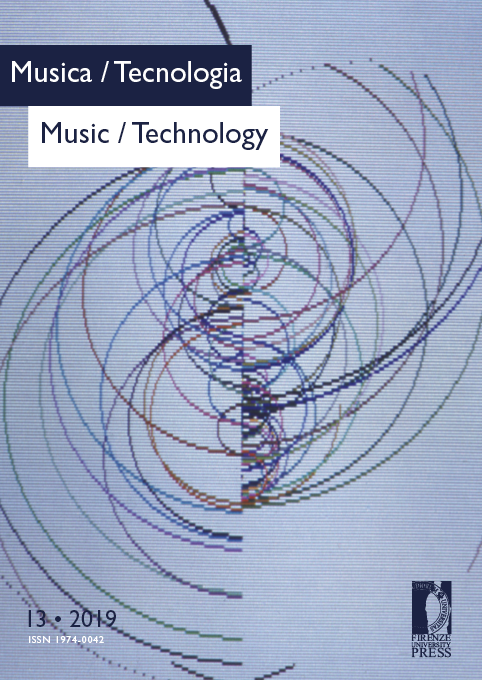Published 2019-12-15
Keywords
- Japanese live electronic music,
- Joji Yuasa,
- Minao Shibata,
- Takehisa Kosugi,
- Masanori Fujita
- Group Ongaku ...More
How to Cite
Abstract
This paper deals with the Japanese contemporary notation whose strategies are in close relation with the aesthetic search for Japanese identity. It focuses on Japanese electroacoustic music of the 1960s and 1970s, with particular attention for live electronic music. In this period Japanese composers are struggling for their musical identity which has to have different language and different notation systems from those of Europe. “Live electronic” develops in a unique style in the 1960s in Japan (incidentally, in the same era when Japanese traditional music starts a new phase called Shin-Hogaku) in a different way from that of Western cultures, even though some composers are affected by Fluxus or Cagean aesthetics. Prescriptive notation of Japanese sound making (much different from the hearing-based graphic visualization like the graphic representation of musique concrète) is discussed in the first part. Chapter 2 focuses on the notation of ICON by Joji Yuasa. Ch. 3 discusses Japanese live-electronic music as indeterminate performance, while ch. 4 discusses notation in the new trend of Japanese traditional music called Shin-Hogaku.


